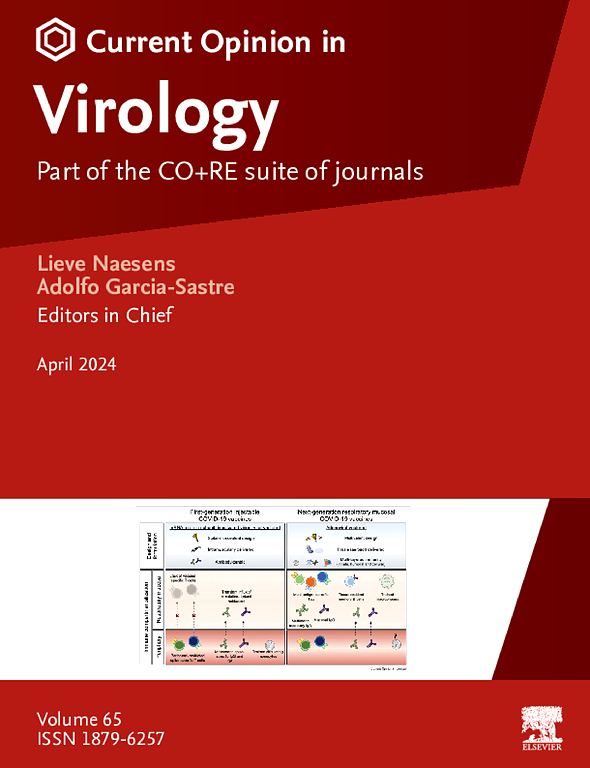Human organoid models to study coronavirus infections of the respiratory tract
IF 5.1
2区 医学
Q1 VIROLOGY
引用次数: 0
Abstract
The coronavirus disease 2019 (COVID-19) pandemic emphasized the need to study coronaviruses more thoroughly. Next to severe acute respiratory syndrome coronavirus-2 (SARS-CoV-2), humans can be infected by SARS-CoV, Middle East respiratory syndrome coronavirus (MERS-CoV), and various seasonal coronaviruses. It is likely that all human coronaviruses have a zoonotic origin and circulated in animal reservoirs before crossing the species barrier into humans. Historically, these viruses have been investigated in vitro and in vivo, mainly utilizing immortalized cell lines and animal models, respectively. Recently, more advanced physiological model systems have been developed to study coronavirus host interactions, with human organoids serving as innovative in vitro tissue culture system that closely mimics human physiology. Organoids provide a promising platform for investigating coronavirus infections, exploring viral tropism, studying host immune responses, and evaluating potential therapeutic interventions. This review explores the origins and use of airway organoids in studying coronaviruses. Additionally, it outlines prospects for leveraging airway organoids for examination of both innate and adaptive immune responses, evaluation of antiviral drugs, and creating intricate co-culture models for enhanced insight into coronavirus infections of the respiratory tract.
人类类器官模型用于研究冠状病毒呼吸道感染
2019冠状病毒病(COVID-19)大流行强调了更彻底研究冠状病毒的必要性。除严重急性呼吸综合征冠状病毒2 (SARS-CoV-2)外,人类还可感染SARS-CoV、中东呼吸综合征冠状病毒(MERS-CoV)和各种季节性冠状病毒。很可能所有人类冠状病毒都有人畜共患起源,并在跨越物种屏障进入人类之前在动物宿主中传播。从历史上看,这些病毒已经在体外和体内进行了研究,主要分别利用永生化细胞系和动物模型。近年来,人们开发出了更先进的生理模型系统来研究冠状病毒与宿主的相互作用,其中人类类器官作为一种创新的体外组织培养系统,与人体生理非常接近。类器官为研究冠状病毒感染、探索病毒趋向性、研究宿主免疫反应和评估潜在的治疗干预措施提供了一个很有前景的平台。本文综述了呼吸道类器官的起源及其在冠状病毒研究中的应用。此外,它概述了利用气道类器官检查先天和适应性免疫反应、评估抗病毒药物以及创建复杂的共培养模型以增强对呼吸道冠状病毒感染的了解的前景。
本文章由计算机程序翻译,如有差异,请以英文原文为准。
求助全文
约1分钟内获得全文
求助全文
来源期刊

Current opinion in virology
VIROLOGY-
CiteScore
11.80
自引率
5.10%
发文量
76
审稿时长
83 days
期刊介绍:
Current Opinion in Virology (COVIRO) is a systematic review journal that aims to provide specialists with a unique and educational platform to keep up to date with the expanding volume of information published in the field of virology. It publishes 6 issues per year covering the following 11 sections, each of which is reviewed once a year: Emerging viruses: interspecies transmission; Viral immunology; Viral pathogenesis; Preventive and therapeutic vaccines; Antiviral strategies; Virus structure and expression; Animal models for viral diseases; Engineering for viral resistance; Viruses and cancer; Virus vector interactions. There is also a section that changes every year to reflect hot topics in the field.
 求助内容:
求助内容: 应助结果提醒方式:
应助结果提醒方式:


